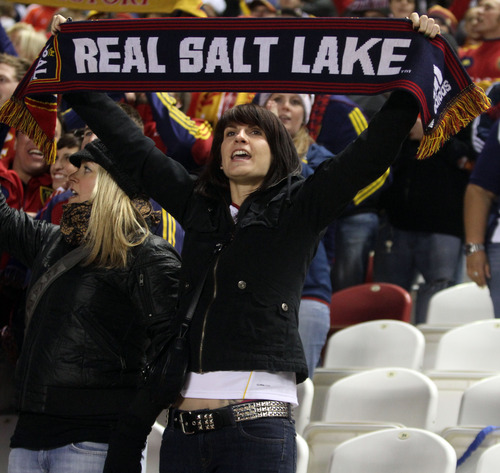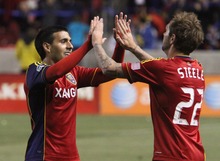This is an archived article that was published on sltrib.com in 2013, and information in the article may be outdated. It is provided only for personal research purposes and may not be reprinted.
ESPN and NBC clearly have something against Real Salt Lake. It's obvious — all you have to do is look at Major League Soccer's 2013 television schedule.
This season, 87 regular-season matches will air on national TV. That's 174 available slots. RSL will fill three, all on NBCSN. That's 1.7 percent of the total.
The league's TV partners argue that teams in big TV markets mean bigger ratings. That's why New York will make 19 appearances; Los Angeles 17; and Chicago 16.
But that's flawed thinking. MLS doesn't know how to market itself, and the league's powers-that-be clearly aren't paying attention to other, more successful leagues.
Oklahoma City is one of the smallest TV markets in the NBA — 22 percent smaller than little ol' Salt Lake City — and yet the Thunder are on national TV 25 times this season.
Why? Because the Thunder are hot. Over the past three seasons, RSL has been hot. And they were barely a blip on national TV.
The NBA also knows how to market its players and create stars. Other than David Beckham, MLS, ESPN and NBC have failed to market a single soccer star. When the Utah Jazz were hot in the '90s, they were on national TV all the time.
If the NBA had operated the way MLS operates now, nobody would have known who Karl Malone and John Stockton were.
You're telling me that more savvy marketers couldn't have worked with Javier Morales? Alvaro Saborio? Nick Rimando? That's hard to believe.
And the numbers behind the continued national TV snub just don't hold up. Salt Lake is the league's smallest TV market, with 917,370 homes, according to Nielsen. Columbus, Ohio, has 930,460 homes, and the Crew will also be making just three appearances on national TV.
Kansas City has 931,320 homes. But Sporting Kansas City will be on national TV 13 times.
That's 4.3 times as many appearances for a team in a market that has 1.5 percent more homes than Salt Lake and 0.01 percent more homes than Columbus.
Which makes it "hard to accept the ESPN/NBC programmers' argument that market size is driving these decisions," said Trey Fitz-Gerald, RSL's vice president of broadcasting and communications. This is something that clearly rankles them at Rio Tinto Stadium. They're competitors, and they see this as a slap in the face.
But does it matter? Not to local RSL fans, who have better TV access to games than most MLS fans. (RSL's local TV schedule — on KTVX-Channel 4 and KUCW-Channel 30 — will be announced soon.)
And this isn't college football, where a lack of TV exposure can mean a lack of respect in the polls and can cost a team a shot at the national championship. In MLS, you win your way to a title.
It doesn't matter much in terms of money, because the league shares television revenue. Which isn't much, anyway — $10 million per season from NBC; $9 million from Galavision; and $8 million from ESPN. Split 19 ways, that's $1.42 million apiece.
MLS' national TV deals are about exposure, not money. About building a brand. About building a league.
MLS, ESPN and NBC aren't helping themselves. And they're hurting the growth of soccer in the United States.
Scott D. Pierce covers television for The Salt Lake Tribune. Email him at spierce@sltrib.com; follow him on Twitter @ScottDPierce. —





